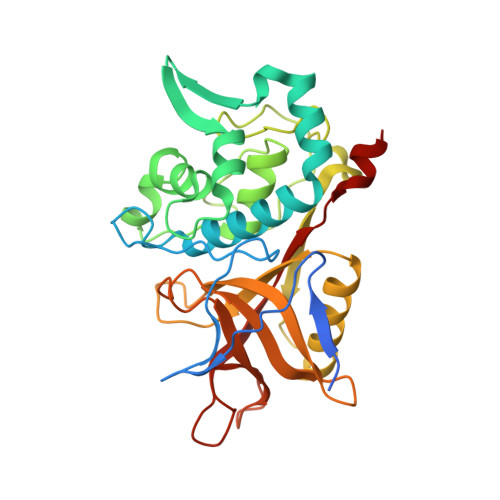Crystal structure of group a streptococcus mac-1: insight into dimer-mediated specificity for recognition of human IgG.
Agniswamy, J., Nagiec, M.J., Liu, M., Schuck, P., Musser, J.M., Sun, P.D.(2006) Structure 14: 225-235
- PubMed: 16472742
- DOI: https://doi.org/10.1016/j.str.2005.10.012
- Primary Citation of Related Structures:
2AU1, 2AVW - PubMed Abstract:
Group A Streptococcus secretes cysteine proteases named Mac-1 and Mac-2 that mediate host immune evasion by targeting both IgG and Fc receptors. Here, we report the crystal structures of Mac-1 and its catalytically inactive C94A mutant in two different crystal forms. Despite the lack of sequence homology, Mac-1 adopts the canonical papain fold. Alanine mutations at the active site confirmed the critical residues involved in a papain-like catalytic mechanism. Mac-1 forms a symmetric dimer in both crystal forms and displays the unique dimer interface among papain superfamily members. Mutations at the dimer interface resulted in a significant reduction in IgG binding and catalysis, suggesting that the dimer contributes to both IgG specificity and enzyme cooperativity. A tunnel observed at the dimer interface constitutes a target for designing potential Mac-1-specific antimicrobial agents. The structures also offer insight into the functional difference between Mac-1 and Mac-2.
- Structural Immunology Section, Laboratory of Immunogenetics, National Institute of Allergy and Infectious Diseases, National Institutes of Health, 12441 Parklawn Drive, Rockville, Maryland 20852, USA.
Organizational Affiliation:


















